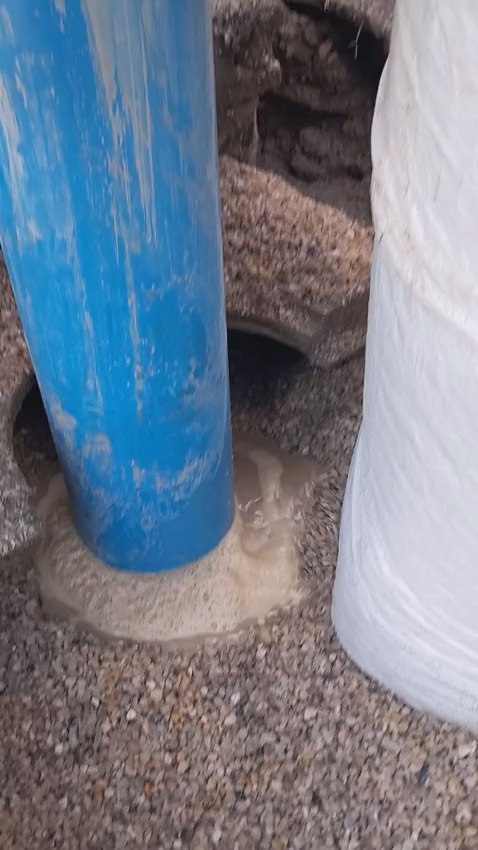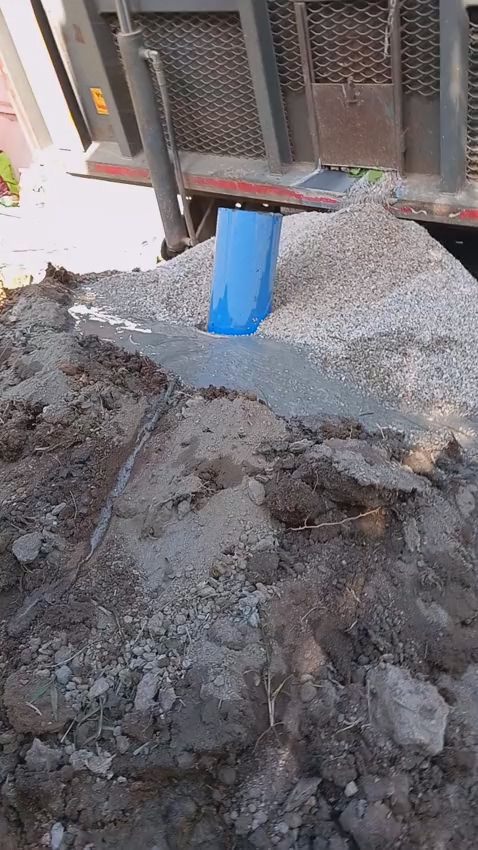Planning and Preparation
The implementation of water wells is a crucial step that turns studies and permits into an efficient and secure water extraction system. It is a meticulous process that brings together drilling equipment, technical expertise, and a steadfast commitment to environmental sustainability.
Before starting drilling, it is essential to analyze the land and geological conditions based on existing surveys and studies, which identify the optimal location and estimate the depth for water extraction.
During this stage, the technical team evaluates the project's feasibility, ensuring that all parameters align with legal and environmental standards.
Drilling Technologies and Methodologies
Once the site is determined, the actual drilling process begins with the use of drilling equipment. We employ methods such as rotary percussion drilling and rotary drilling, selecting the most appropriate technique according to the characteristics and conditions of the soil and subsoil to minimize environmental impacts and optimize the well’s efficiency.
After drilling, an internal casing is installed using PVC or steel pipes. This system protects and stabilizes the well walls, preventing collapse and the infiltration of sediments and other contaminants, which is crucial for maintaining the quality of the extracted water.
To conclude the process, we perform a final cleaning of the debris accumulated during drilling, inside the pipeline, using high-pressure compressed air blowers. This procedure ensures the removal of residual materials and suspended particles, preparing the well for efficient water extraction.
This integrated approach ensures that each well is carried out with technical rigor and in compliance with environmental regulations, resulting in a high-quality and durable water extraction system.
Installation of Water Extraction and Pumping Systems
After the well is completed, the next step is the installation of water extraction and pumping systems. This phase includes the placement of submersible pumps, control valves, and filtration systems, which guarantee a safe and continuous water supply.
The entire system is configured to allow monitoring and self-regulation, facilitating the identification of any anomalies and the performance of preventive maintenance.
Regardless of the purpose of the research work, it must be carried out in such a way that there is no chemical or microbiological pollution of the aquifer water being exploited—whether due to infiltration of surface water or runoff, or from the mixing of poor-quality groundwater—by employing appropriate techniques.
Gravel Pack
The term Gravel Pack refers to the layer of rounded gravel placed between the final casing column and the inner walls of the drilled hole, specifically in the section where groundwater is collected through the well screens.
This granular filling plays a crucial role in the performance and durability of the water well by fulfilling several complementary functions:
Filtration
Acts as a physical barrier, preventing fine particles – such as sand and clay – from being carried into the well during water extraction.Dampening
Reduces vibrations caused by the intermittent operation of the submersible pump, helping to stabilise the system.Structural Stability
Provides mechanical support to the casing column, lowering the risk of deformation or collapse.Isolation
Serves as a protective barrier against the infiltration of surface contaminants.
To ensure the effectiveness of the Gravel Pack, it must be placed in the well gradually and in a controlled manner. If introduced too quickly, the material may settle unevenly, potentially weakening the casing structure and compromising the integrity of the water collection system.
Testing and Monitoring
The quality and performance of the water well are evaluated through hydraulic and flow rate tests. These tests are essential for verifying that the system meets the established technical and safety requirements.
Continuous monitoring of the well allows for adjustments to operational parameters and ensures that water consumption remains within authorized limits, thereby protecting local water resources.
Commitment to Sustainability and Safety
The implementation of water extraction wells goes beyond mere technical implementation; it also reflects a commitment to environmental preservation and social responsibility. Each project is conducted in a way that minimizes impacts on the ecosystem by employing practices that promote sustainability and resource conservation.
The safety of the operators and the integrity of the installed systems are also prioritized, ensuring that all procedures comply with occupational health and safety standards.







